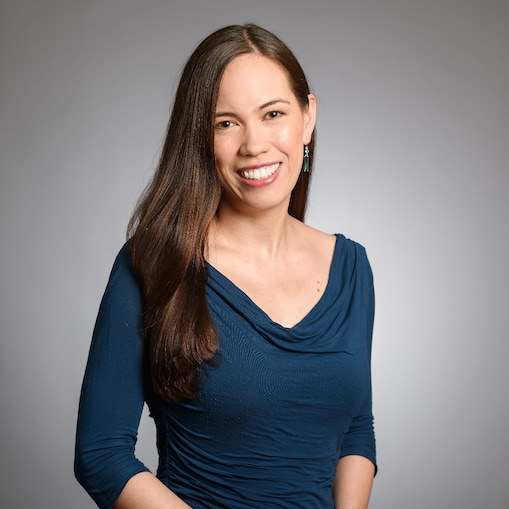Valerie Williams, Polymer Scientist
Meet our Polymer Pro, Valerie Williams, Polymer Scientist. A member of the Shell family since 2015, Valerie brings her in-depth knowledge of catalyst behavior and molecular characterization techniques for polyolefins to the Shell Polymers team.
Valerie Williams
Polymer Scientist
As the construction of its new polyethylene plant in Monaca, Pennsylvania, continues, Shell Polymers has been hiring a team of industry experts, aka Polymer Pioneers and Polymer Pros, with proven track records in polymers. In this article, Polymer Scientist Valerie Williams shares how her team will support customers with high-quality insights by stocking the testing lab with state-of-the-art equipment.

Comprehensive Polymer Expertise Supports Customers
As a polymer scientist, Valerie will work closely with technical services, process technologists, and other polymer scientists to tackle considerations customers may need to succeed in their applications, such as determining the feasibility of matching resin grades. To do this, Valerie and her team will spend the next year gathering and familiarizing themselves with new laboratory equipment so they can hit the ground running when the plant starts up.
Valerie explained, “At the end of the day, I do whatever it takes to help our technical services team be successful when they collaborate with our customers.”
Valerie Williams, Polymer Scientist"I do whatever it takes to help our technical services team be successful when they collaborate with our customers."
The Innovation Center, a large building that houses the 86,000-square-foot application hall, serves as the stationing area for Valerie and her team members. This center will also be the home to several laboratories dedicated to quality control, and Valerie’s area of expertise, resin testing. These labs will be staffed by accomplished scientists, including Valerie, and will collectively support customers by troubleshooting customer challenges, diving into analytics, and making sure only the highest-possible quality resin leaves the plant.
Collaborate with Technical Services to Solve Customer Problems
A crucial part of Valerie’s role will be to solve customer challenges brought to technical service team members in their everyday engagement with plastics converters. This could include overcoming situations like changes in grades, shifts from one reactor to another, and troubleshooting resin. Ultimately, Valerie will commit her time and energy to tackle converter problems, along with the wider behind-the-scenes team of polymers scientists and engineers.
“One of the nicest things is that we have automation for sample prep and measuring, which will support our ability to do data analysis. While this technology plays a big role in saving us time, it will reduce the chances of operator inconsistency to help us yield more reliable data.”
Even though plant construction is still in progress, Valerie and her team are busy preparing the lab with the best possible technology to support their work once the site starts up. Since Shell Polymers is a greenfield project, Valerie and her team get to build the lab from the ground up, meaning everything that they are putting into it is state-of-the-art for the time. This includes automated sample preparation and measurement. Valerie is especially excited about this equipment since manual alternatives leave room for less consistent data based on who is operating it. With an automated solution bringing consistency to this process, it should play a significant role in providing higher-quality data to guide their decisions and recommendations.
A Seasoned Chemist
After earning a Ph.D. in organometallic chemistry from Cornell University and carrying out a postdoctoral fellowship in polymer chemistry at Carnegie Mellon University, Valerie joined Shell in 2015. She started her career as a research and development process chemist in the Higher Olefins and Derivatives group (HODer) at the Shell Technology Center in Houston. She worked heavily on catalyst design, trace chemistry mitigation, and analytical method development to support lab- and pilot-scale operations.
When asked about her passion for science, Valerie said she decided she wanted to pursue a chemistry career in high school, thanks to excellent teachers. A fun fact about Valerie is that she was initially drawn to inorganic chemistry because of the photogenic appeal of the compounds created in the process! She explained, “A lot of compounds that you make are just straight-up pretty. You have a lot of colors and photoluminescent things that glow… It’s kind of like a kid’s magic show!”
Four PIeces of Advice from Valerie for Future Polymer Scientists
Testing variability can be a real problem
Test data is meaningless without error bars. Before running tests or reporting out any data, be sure you know your instrument’s run-to-run variation, operator-to-operator variation, and where possible, lab-to-lab variation. This value can be different for different test materials.
Be skeptical of good results
When data supports your initial expectations, it’s easy to accept the results as correct. Never draw conclusions until you’ve eliminated all other reasonable possibilities that could account for the data.
Determine the real question you’re trying to answer
Analytical measurements and testing results are only ever a means to an end, to answer a fundamental question. This could be a very simple or highly complex issue, but whatever the problem at hand, keep digging until you really understand what problem you’re trying to solve. Ensure that you understand what you’re looking for in the results before you start experimentation.
Talk with EVERYONE
Especially in a large organization, it can be difficult to know what problems are out there until someone comes to you with a specific task. Engage with whoever you can and listen to what folks are working on in as many different areas as practical to see if you can add value. You might be able to solve a problem that no one else can.
